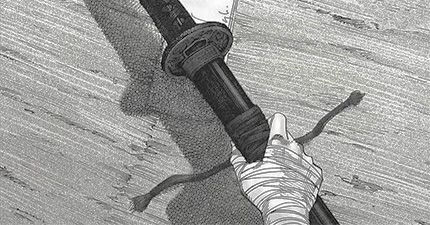The Lunation Cycle
The phases of the moon are understood by comparing light patterns.

In the New Moon phase, the light of the Sun is behind the Moon. The Moon is also rising with the Sun, during the day. That's why we don't see the Moon at night when the Moon is new.
Imagine yourself taking a selfie with a hot and bright light behind your head. Your features get hazy in the camera's viewpoint. Your image looks more vague and romantic under this type of lighting. This type of light was also favored by Impressionist painters, who each saw different colors in the lighting that other painters wouldn't necessarily see. We can call this lighting subjective. The New Moon phase, then, is a subjective phase just like this type of lighting.
It is important to get plenty of sleep during the New Moon phase, because your body is healing itself. When isolated and in nature, people are also more likely to get their period during the New Moon.
Next, the Moon starts to appear again as a crescent in the western sky in the evening. This waxing crescent phase is like an infant who has just found their body for the first time and is exploring itself. The Moon, in this phase, is in a period of discovery.
During First Quarter Moon, the Moon squares the Sun in the sky. This is why it can be called a crisis moon. It shows that there is a clash between your needs (your Moon) and your wants (your Sun) and that both must make way for each other. The First Quarter Moon will also be visible at night.
This lighting is like the chiaroscuro of baroque paintings commissioned by the Church just after the Renaissance, which is also the portrait like lighting favored by propaganda posters of early Modernism or advertisements. When this lighting is used, one side is highly visible and another is in the dark. You can say that this lighting is one sided. The quarter moon phases, then, are phases that feel like there is a point to everything that is happening.
The waxing gibbous Moon has the Moon's body getting larger and fuller. After the private crisis brought on by the First Quarter Moon, it is now preparing itself for its full state.
The Full Moon is 180 degrees away from the Sun, rising in the middle of the night. It will be in a sign opposite to the sign that the Sun is in. If the Sun is in Gemini, then the Full Moon happens in Sagittarius.
When you go to the dentist, they shine a light on your face to take a close and careful look at your teeth. Sometimes they will even give you sunglasses to wear to prevent the light from blinding your eyes. This clinical lighting is like the light of the Full Moon. Everything is out of the open and vulnerable to examination. Your consciousness (the Sun) is able to appreciate your subconsciousness (the Moon) fully. This is usually also a socially dramatic time, with things happening at night when everyone is their lunar selves.
The most important thing to do during the Full Moon is to feed yourself nourishing foods. You're more likely to be active, since you have more light at night, and burning up more calories. More often than not, people will tend to ovulate around this time. If you get your period during the Full Moon, however, you might be focused on a special pursuit or project that you want to manifest into the world.
After the Full Moon, the Moon starts to wane and get smaller again. Your energy is dwindling, just like the Moon's light. During the waning gibbous phase, you might still feel social, but the energy might feel more easygoing.
The Last Quarter Phase has lighting just like the First Quarter Phase. The Moon squares the Sun again, this time from the other side. It is retreating towards the Sun, not leaving it. The clash between the Sun and Moon is more collective than it is individual during this lunar phase. Since it also appears in the early AM hours, it is less likely for us to see this Moon in the sky.
As the Moon disappears further, it becomes a waning crescent again and rises in the eastern sky in the morning. You might be far less energetic and need more time by yourself. The Moon is preparing for another New Moon, where it will begin its monthly cycle again and again.


